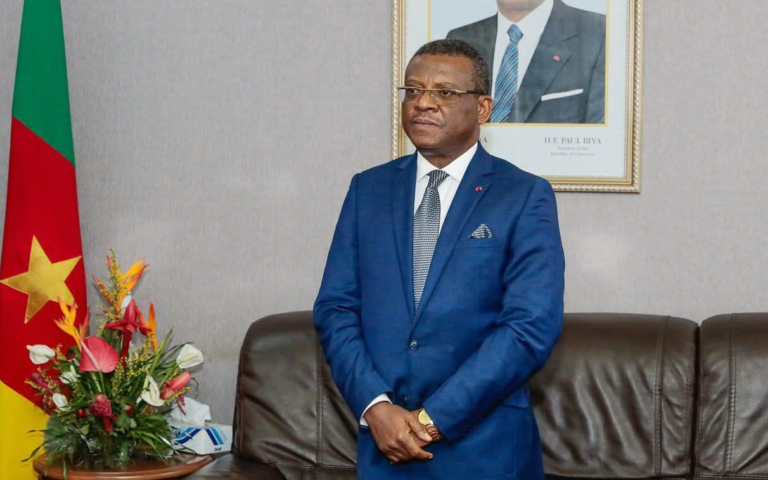Joseph Dion Ngute, Cameroon’s Prime Minister, recently wrapped up a 72-hour visit to Bamenda with self-congratulatory fanfare. In a widely circulated social media post on Twitter, Dion Ngute himself boasted about “immense achievements” under the so-called Presidential Plan for the Reconstruction and Development of the North-West and South-West Regions (PPRD-NW/SW). Yet, this visit offered no tangible evidence, no factual assessment, and no genuine engagement with the realities on the ground in Bamenda. It was a hollow performance — a stage-managed display of regime propaganda rather than a meaningful step toward peace or reconstruction.
But what are they reconstructing really when war rages on? If anything, the streets of Bamenda — literally and symbolically — should have been at the center of any reconstruction effort. That they are ignored says everything. Only a few years ago, the regime sent bulldozers into the city to tear down homes and businesses under the pretext of widening the roads. Families were displaced, shops were razed, and entire livelihoods were destroyed. The promise was to modernize Bamenda’s streets and uplift the city’s infrastructure. But not four months later, in typical fashion, the project was abandoned. The Caterpillars disappeared, and so did the regime’s commitment.
The Bamenda they left behind is a city that lies in ruins. In the dry season, Bamenda’s streets are so ravaged and dusty that simply walking or driving can pose a health hazard. Residents choke on clouds of brown sand while walking the streets of Bamenda. In the rainy season, the city transforms into a swampy deathtrap, where potholes turn to mini-lakes and roads to swine pits. Just do a search on YouTube and see for yourself, entire sections of the city are virtually impassable. Vehicles frequently get stuck or break down, and the constant erosion has turned what should be city roads into dangerous terrain. In Bamenda, garbage competes for space with humans, an indication of the utter incompetence of the city council. The lack of proper waste management adds a toxic layer to an already unbearable living condition.
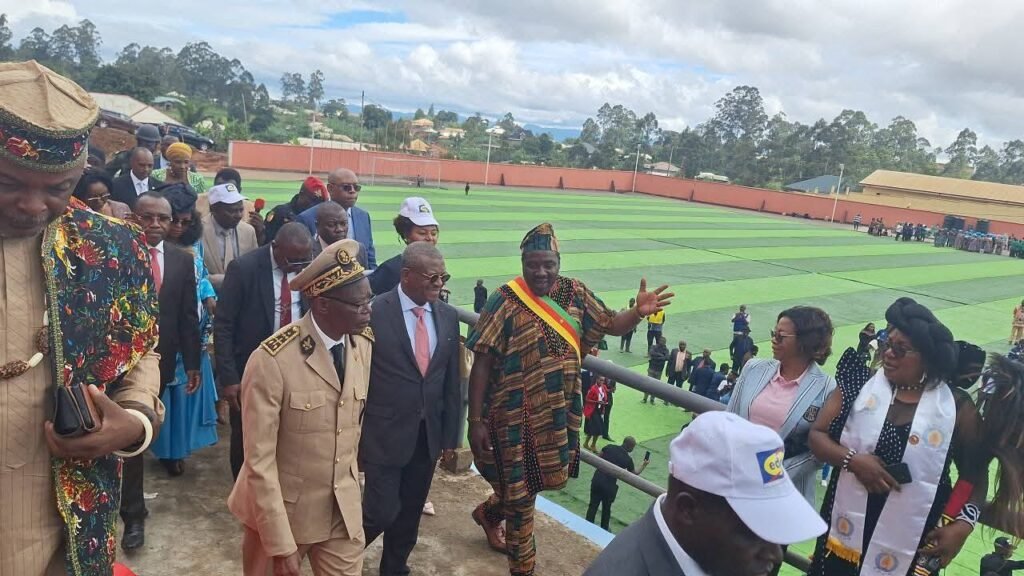
With all this suffering in plain sight, Dion Ngute speaks of “life returning” to Bamenda. One must ask: which life? Where is this progress he refers to? Which roads has he rehabilitated? Which homes have been rebuilt? Which communities have been resettled? There is no life anywhere in the Southern Cameroons, talk less of Bamenda, and Dion Ngute knows this.
Dion Ngute failed to mention a single reconstruction project by name. He failed to provide images, video, or even basic documentation. His visit was swamped in CPDM regalia and shadowed by an intimidating deployment of armed security forces. The so-called crowd that greeted him was not the organic expression of a grateful people but a carefully selected assembly of CPDM militants, dressed in party uniforms and flanked by a combined force of the army, police, and gendarmerie. It resembled a political parade, not a government outreach.
Amidst all this, whispers circulated that Dion Ngute’s grand unveiling was a modern soccer stadium in Bamenda. If that was the crown jewel of his trip, then it further confirms the regime’s detachment from reality. Take a look for yourself. Look at the images of the stadium. That is it. That is exactly what Dione Ngute left Yaounde to inaugurate. The so-called stadium is a piece of embarrassment. It has no bleachers, no seats, and no functional infrastructure. It is merely a fenced yard, with a roughly laid synthetic surface and a laughable colonial-style cabin meant to sit not more than a hundred people. The term “stadium” is a misnomer. Photos of the venue depict not a sports facility but what looks like an abandoned ceremonial ground. But wait until you hear the billions of CFA francs buried in this project (or should I say stolen from the project)?
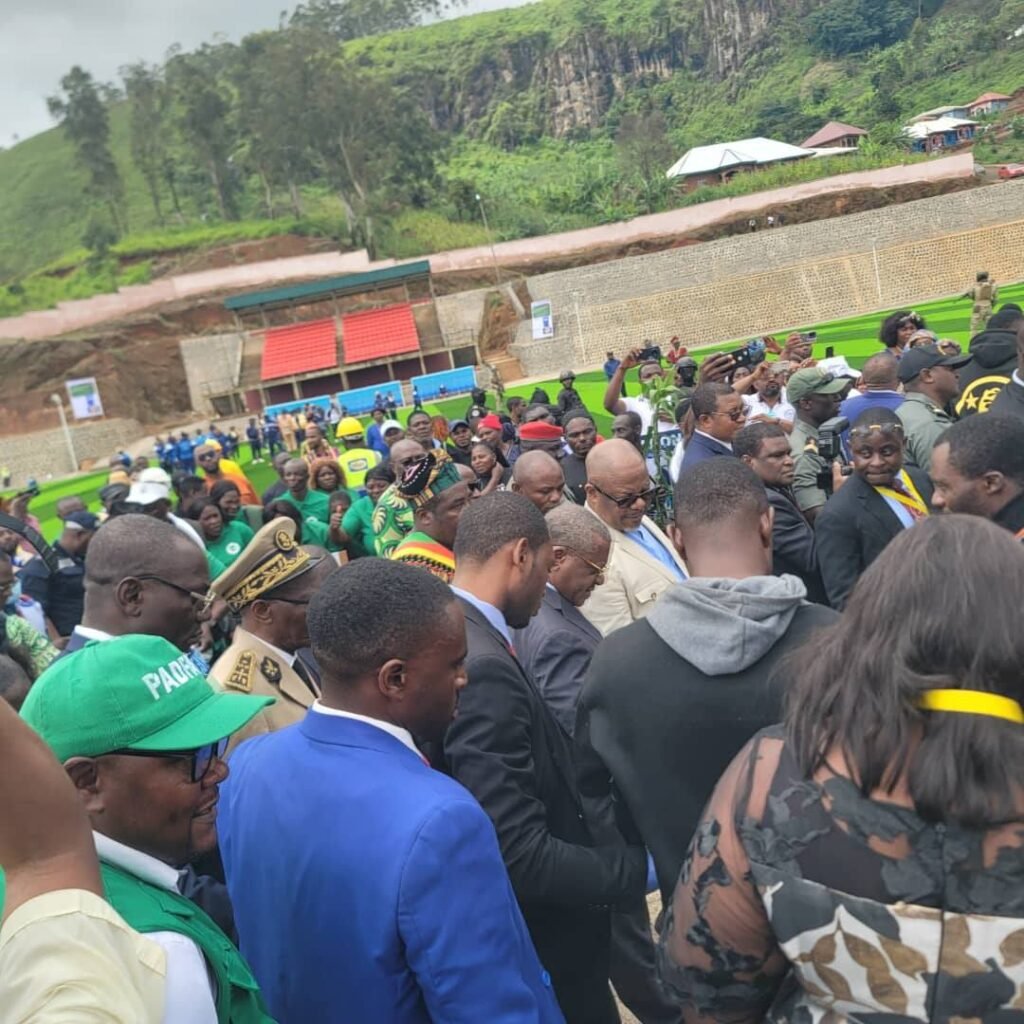
This was not a visit to inspect development. This was a propaganda tour. The people of Bamenda were not shown any evidence of the PPRD-NW/SW plan in action because there is none. The so-called reconstruction is a phantom narrative built for donors, media optics, and regime survival — not for the people who suffer daily.
Even more troubling, Dion Ngute used his visit to call on traditional rulers and elites to lift the “ghost towns” once and for all as if they instituted it in the first place. The people did. This statement is either willfully ignorant or deliberately dishonest. Ghost towns are not imposed by chiefs. Ghost Towns are act of collective civil disobedience. They are the people’s only remaining voice in a system that has muted them for decades. Ghost towns persist not because of tradition but because of oppression. They are the language of a people under siege, of a people who have suffered arbitrary arrests, village burnings, and military occupation for the better part of their lives.
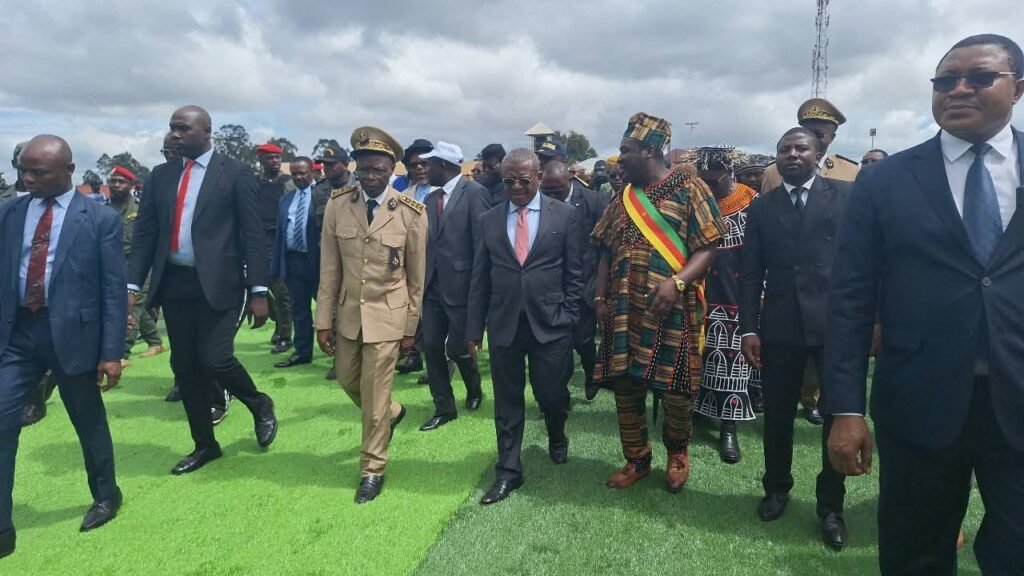
Asking chiefs to end ghost towns is not a solution. It is a redirection of blame. It misplaces accountability and pretends that the conflict is cultural, not political. But the truth is unescapable: peace will not return where justice is absent. Roads and stadiums — even if they existed — do not substitute justice. They do not address the reasons why thousands are displaced, thousands are refugees, why hundreds of villages have been burned, why thousands are caged in prison, and why millions live under fear.
The ghost towns will not vanish because a certain Dion Ngute or the Prime Minister, orders them to. They will not disappear under the watchful eye of gendarmes. They will end when the root causes of this conflict are addressed. That means acknowledging the right of the Southern Cameroons people to self-determination. That means accepting that a people cannot be governed at gunpoint. That means pursuing truth and reconciliation, not surveillance and propaganda.
The visit by Dion Ngute was not a sign of progress but of panic. It was an attempt to breathe life into a narrative that has lost all credibility. The regime needed visuals; it needed to pretend. But the people of Bamenda saw through the charade. They watched the parade of soldiers and officials, the forced cheers, and the camera crews. And they knew it meant nothing.
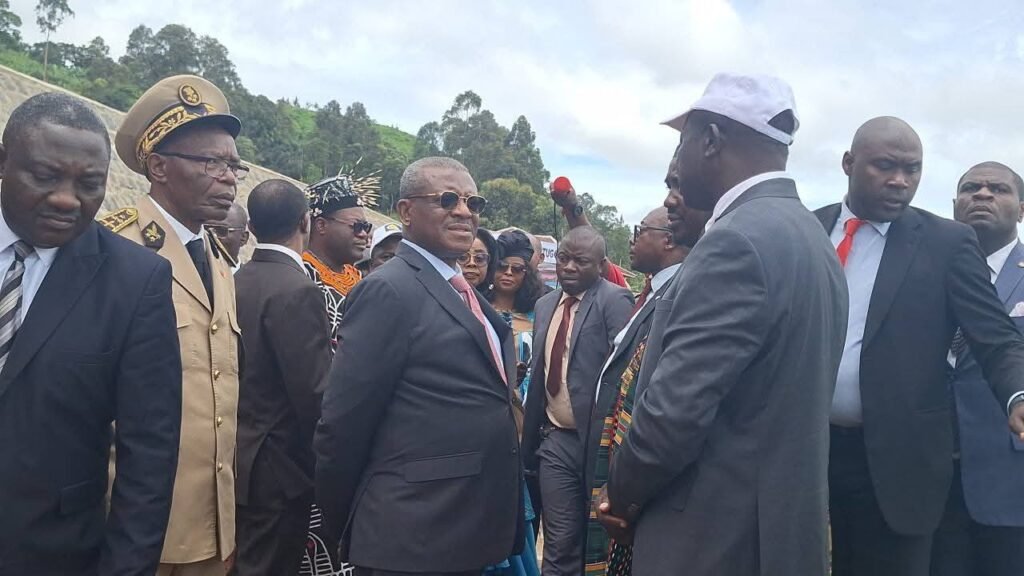
There is no development in Bamenda. There is only damage and decay. There is no peace in Bamenda. There is only occupation. There is no reconstruction in Bamenda. There is only a phantom plan used to pacify international observers while the region bleeds.
The people of Bamenda, and indeed all of Ambazonia, do not want synthetic turf or false hope. They want justice. They want freedom. They want an end to the decades-long marginalization that has reduced their once-prosperous cities to battlefields and their vibrant culture to a footnote.
Dion Ngute’s visit was not a moment of progress. It was a reminder of everything that is wrong with the system he represents. It was a performance for donors, a deception for the media, and an insult to the intelligence of the people. Until the Cameroonian regime stops mistaking coercion for governance and photo-ops for policy, nothing will change.
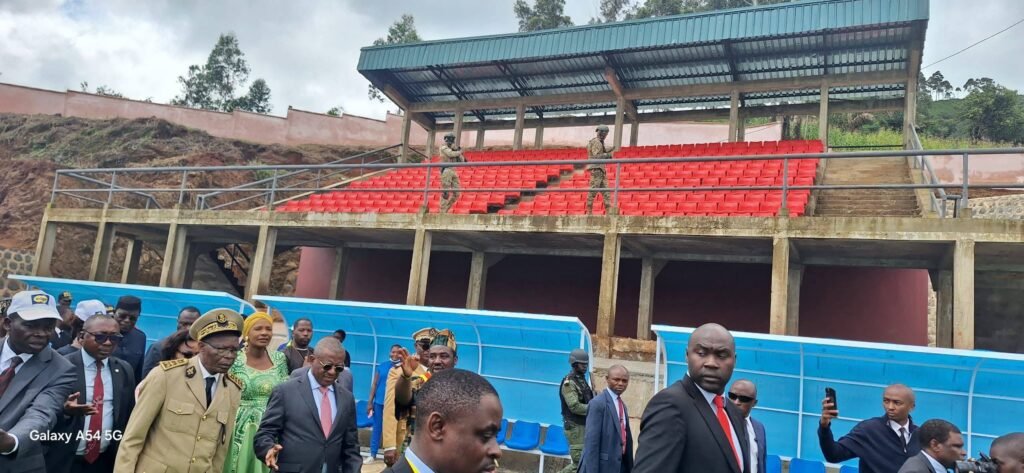
Peace is not returning. It cannot return to a place where roads are craters, stadiums are mockeries, homes are ashes, and leaders are blind to the truth.
Ambazonians are not fooled. They never were. And they never will be. Until the Cameroonian leadership stops mistaking security escorts and CPDM rallies for reconstruction, and until it engages honestly with the political questions at the heart of the conflict, visits like this will do little more than scratch the surface. At the same time, the wounds underneath continue to fester.

